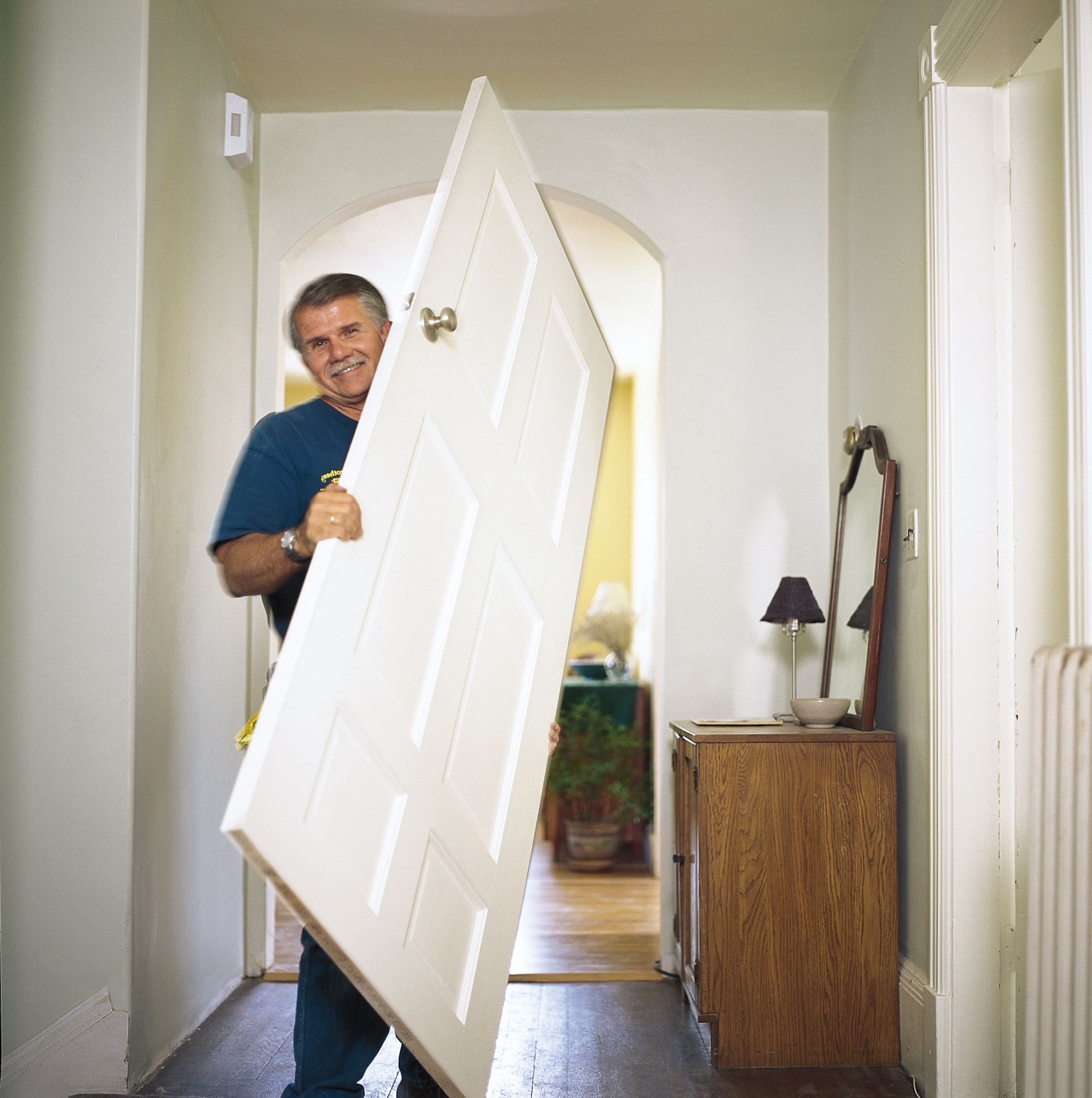A house’s flow depends on the success of its interior doors, and when one stops working properly, moving through your home can feel cumbersome. Replacing an interior door is a simple way to improve the look and functionality of your space, and even increase your property value. Read our guide on how to replace an interior door below, which sorts through tools you’ll need, how to measure for a door, and how to properly hang your new door.
Understanding Interior Door Replacement
Replacing an interior door is a manageable do-it-yourself project that can make moving through your house easier. Familiarize yourself with the basics of replacement below before you move forward with the project.
When To Replace Your Interior Door
Below are several signs that indicate it’s time to replace your interior door:
- Difficulty opening or closing the door
- Outdated style that doesn’t match your home’s decor
- Poor insulation leading to drafts or noise issues
- Visible damage such as cracks, warping, or holes
Benefits of Replacing Interior Doors
Replacing your interior doors comes with the following benefits:
- Better sound insulation between rooms
- Enhanced energy efficiency
- Improved home aesthetics
- Increased property value
- Smoother operation and functionality
Tools and Materials Needed
Gather all necessary tools and materials before you begin your door replacement project. This will make the process smoother and more efficient.
Essential Tools
- Circular saw or handsaw
- Chisel set
- Combination square
- Drill with bits
- Hammer
- Plane (optional)
- Pencil
- Screwdriver (both flathead and Phillips head)
- Sawhorses
- Tape measure
- Utility knife
Required Materials
- Hinges
- Lockset
- New door blank
- Paint or stain
- Paintbrush or roller
- Sandpaper
- Wood screws
Measuring and Purchasing Your New Door
Take the time to properly measure for your new door, and choose a door that fits your needs and style preferences.
How To Measure for a New Interior Door
- Measure the width of the existing door at the top, middle, and bottom.
- Measure the height of the door from the top to the bottom.
- Measure the thickness of the door. Standard interior doors are 1 3/8 inches thick.
- Note whether the door has a left-hand or right-hand swing.
Remember to account for proper clearance: 1/8 inch on the sides and top, and 5/8 inch at the bottom for flooring or carpet.
Choosing the Right Door Type and Style
Consider the factors below when selecting your new door:
- Budget constraints
- Finish (primed, unfinished, or pre-finished)
- Material (solid wood, hollow core, solid core, or MDF)
- Style (panel, flush, French, or bifold)
Choose a door that complements your home’s architectural style and meets your functional needs.
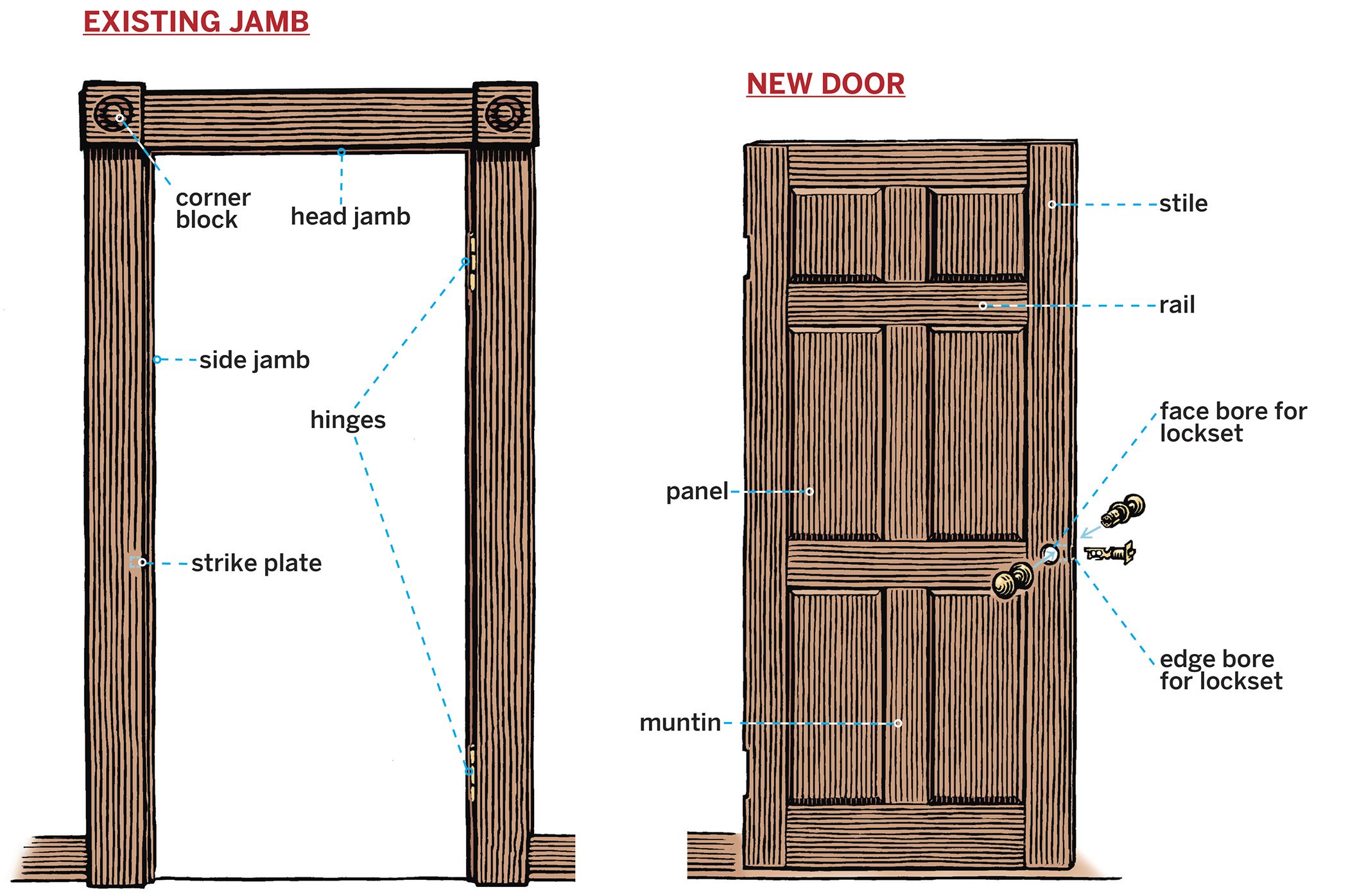
Removing the Old Door
When your new door is ready, you can remove your existing door. Start by detaching the hinges and removing the doorknob and lock.
Detaching the Hinges
- Remove the hinge pins. Start with the bottom hinge and work your way up.
- Ask a helper to support the door as you remove the final pin.
- Carefully lift the door off the hinges and set it aside.
Removing the Doorknob and Lock
- Unscrew the doorknob from both sides of the door.
- Remove the latch mechanism from the edge of the door.
- Take note of how the lockeset is assembled if you plan to reinstall it later.
Once you’ve removed the old door, you can start preparing the new door and move forward with installation.
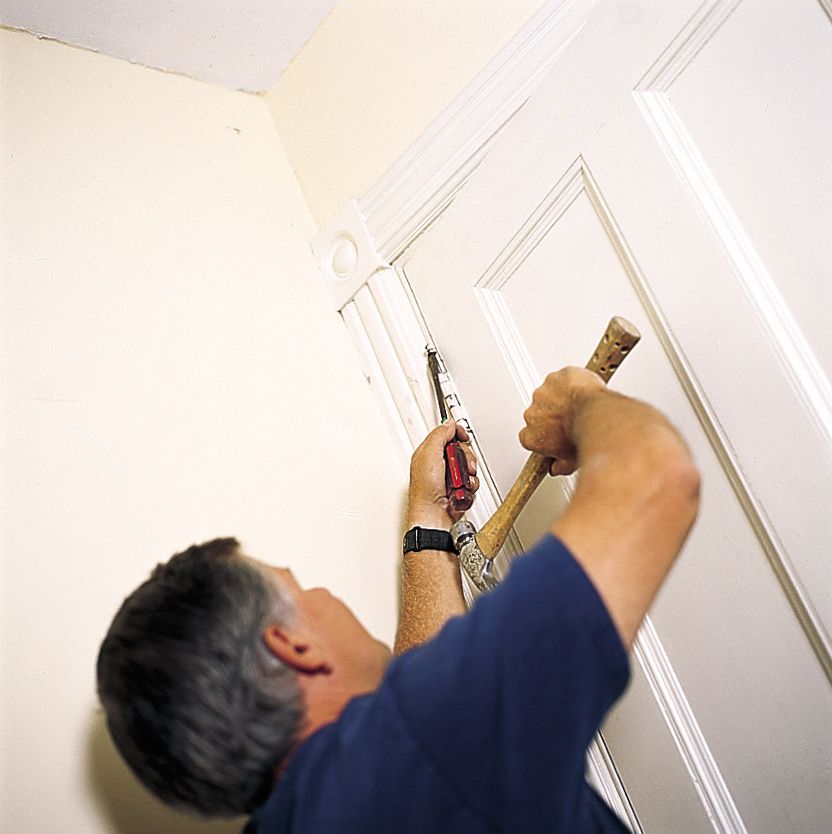
Preparing the New Door
Start preparing your new door for installation by marking the door for trimming and cutting it to the correct size.

Marking the New Door for Trimming
- Place the new door across a pair of sawhorses.
- Lay the old door on top, aligning the top end and lockset edge perfectly.
- Trace around the old door with a pencil to mark where the new door needs trimming.
- Use a combination square to transfer the hinge locations from the old door to the new one.
Use a utility knife instead of a pencil when outlining hinge mortises. This will produce more accurate lines.
Cutting the Door to Size
- Score along the pencil marks with a sharp utility knife to prevent splintering.
- Use a circular saw with a straightedge guide to cut the door to the correct height and width.
- If you’re removing more than 1 inch, take half from the bottom of the door and half from the top of the door.
Remember to maintain proper clearance: 1/8 inch on the sides and top, and 5/8 inch at the bottom for flooring or carpet.
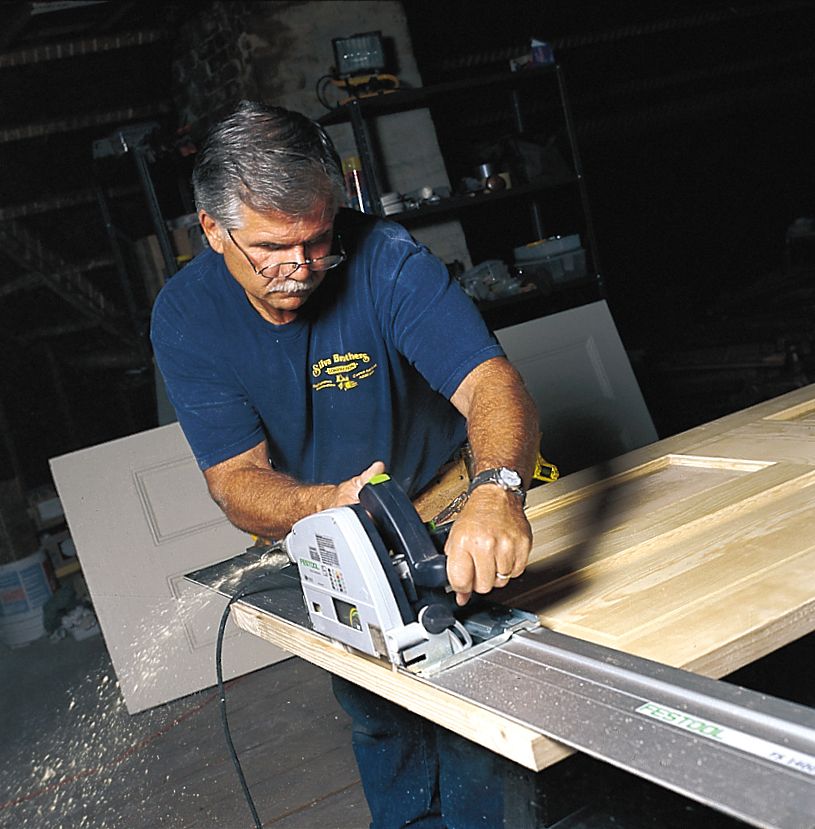
Installing Hardware on the New Door
Once you’ve cut your door to size, you can install your hardware. This involves chiseling out hinge mortises, attaching hinges, and installing the lockset.
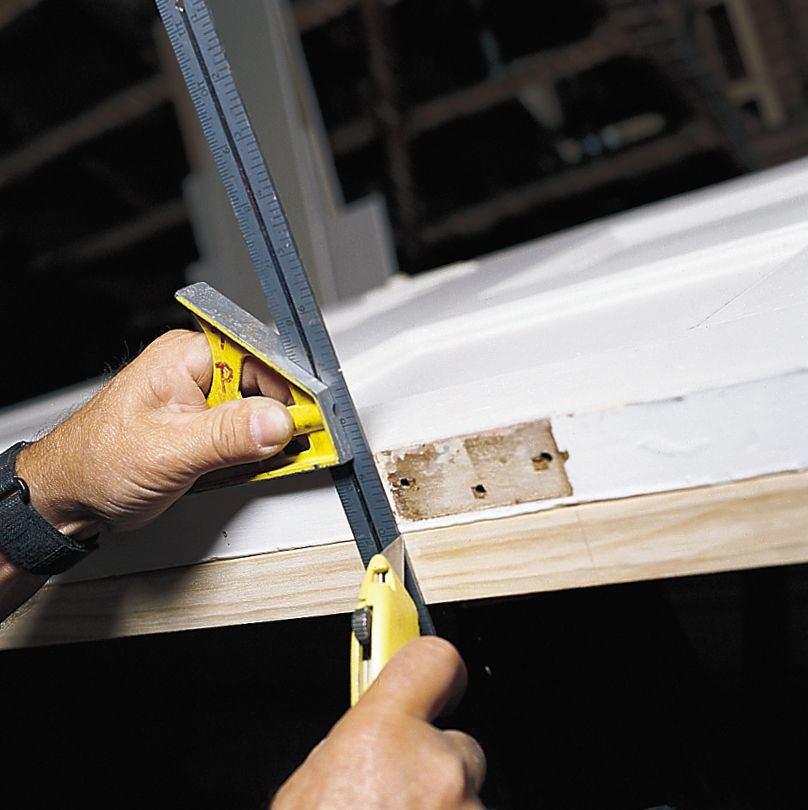
Chiseling Out Hinge Mortises
- Stand the door on its edge with the hinge layouts facing up.
- Use a chisel and hammer to outline each mortise.
- Make a series of closely spaced cuts that are as deep as the hinge is thick.
- Hold the chisel at a low angle and tap it to remove waste wood.
- Test-fit the hinge leaf to ensure it sits flush with the door edge.
If you accidentally cut a mortise too deep, place a thin wood or cardboard shim behind the hinge leaf to adjust the fit.
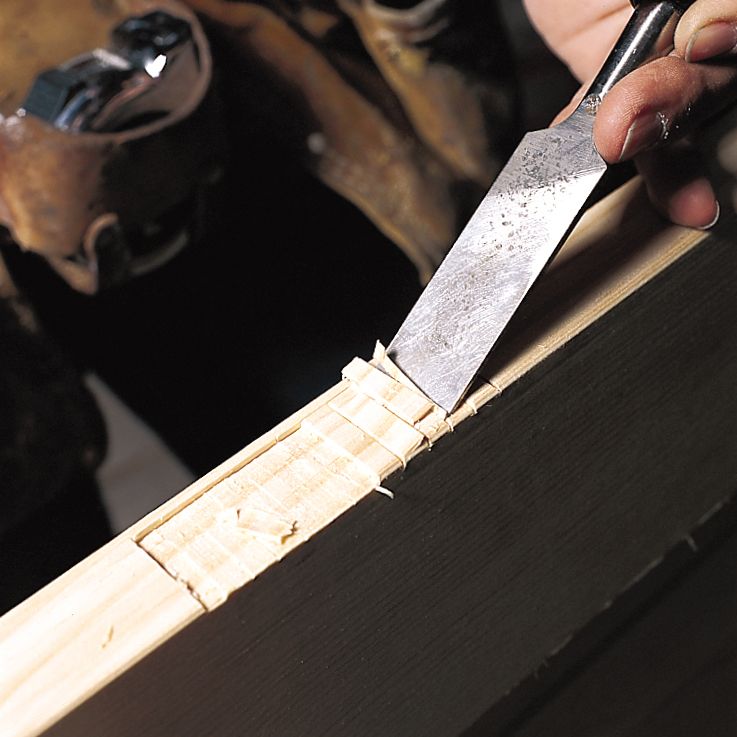
Attaching Hinges to the Door
- Position the hinge leaf in the mortise.
- Use a drill and centering bit to create pilot holes through the screw holes.
- Secure the hinge to the door with screws.
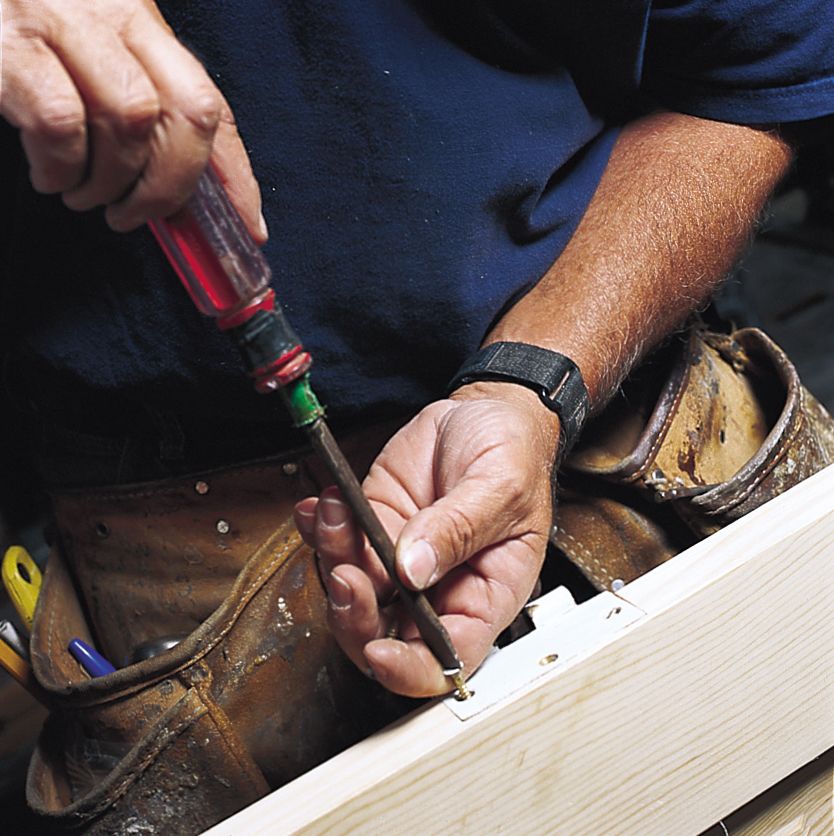
Installing the Lockset
- Mark the point at which the strike plate hole meets the door edge.
- Use the locket’s template to mark destinations for the doorknob and latch.
- Drill the doorknob hole with a 2 1/8-inch hole saw.
- Cut the latch edge bore with a 7/8-inch spade bit.
- Trace around the latch assembly and chisel out a shallow mortise.
- Screw the latch to the door and install the doorknobs.
Once you’ve installed your hardware, you can hang your door.
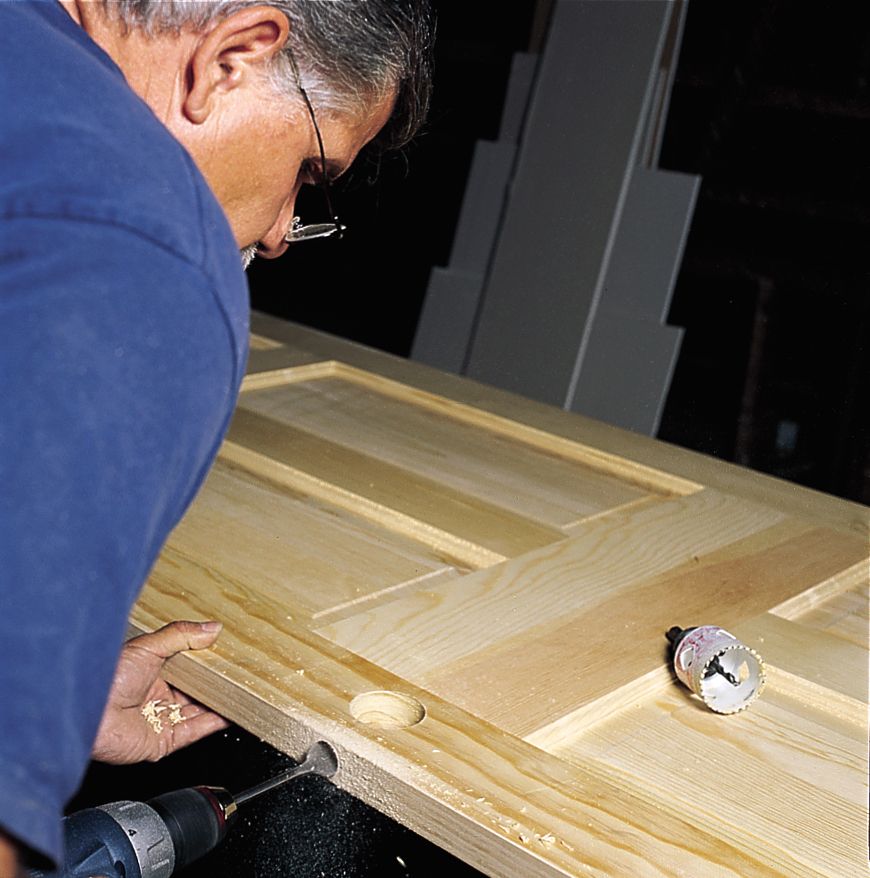
Hanging the New Door
Hanging your new door involves aligning the door with the frame, inserting hinge pins, and testing the door’s functionality.
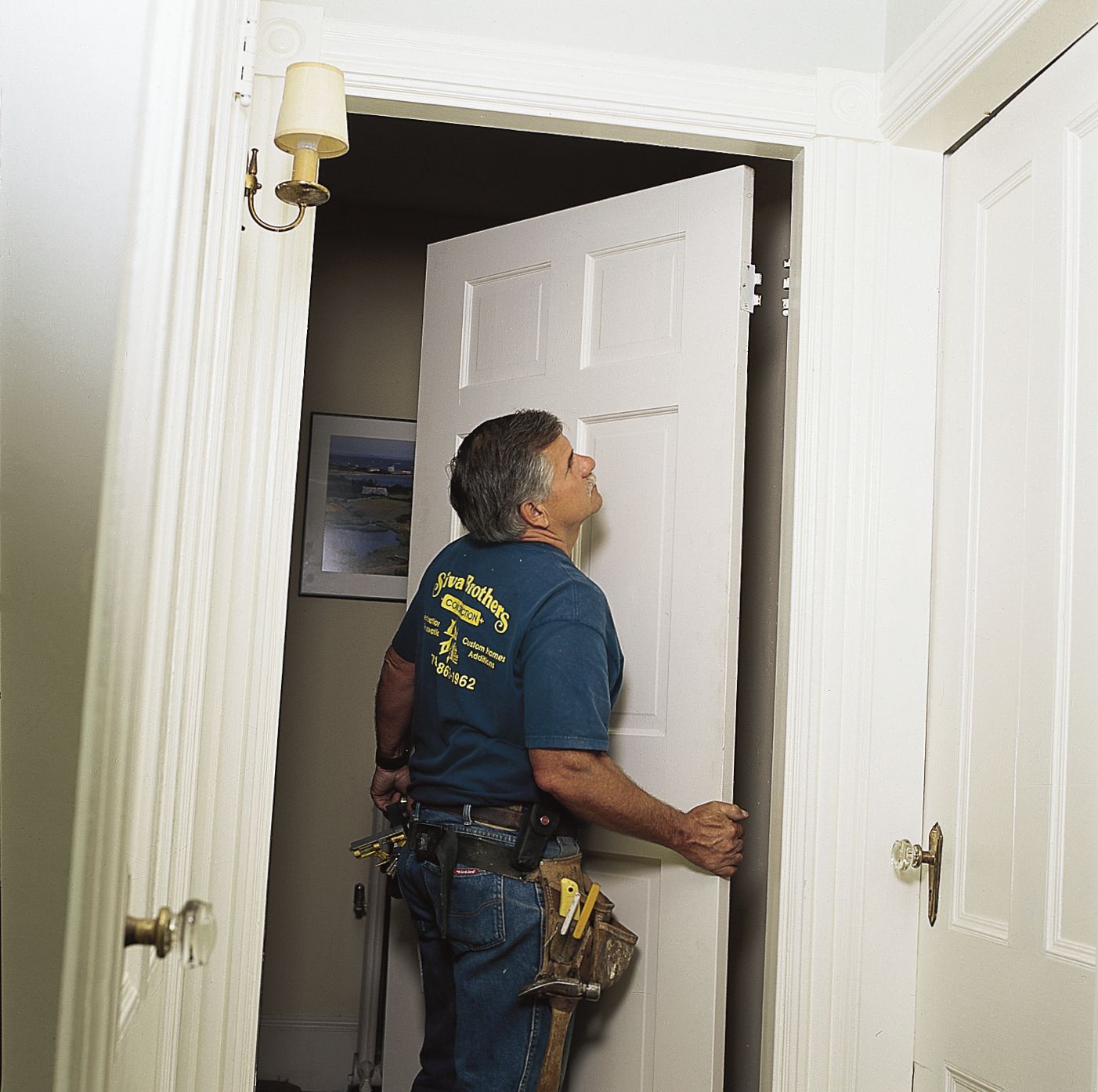
Aligning the Door with the Frame
- Hold the door in the opening, and verify it’s level and plumb.
- Align the hinge leaves on the door with those on the frame.
- Ask a helper to support the door while you work on the hinges.
Inserting Hinge Pins
- Start with the top hinge and work your way down.
- Carefully align the hinge knuckles and insert the hinge pin.
- Tap the pin gently with a hammer to fully seat it.
Testing Door Functionality
- Test the door to see if it opens and closes smoothly.
- Test the latch to see if it engages properly with the strike plate.
- Check for even gaps around the door (1/8 inch on sides and top, 5/8 inch at bottom).
If the door rattles when you close it, bend out the metal tab inside the strike plate slightly to create a tighter fit.
Finishing Touches
If your new door is functioning properly, you can add the finishing touches to complete the look and secure long-lasting performance.
Painting or Staining the New Door
- Remove the door from its hinges for easier painting or staining.
- Sand the door surface lightly for improved paint adhesion.
- Apply primer, then your chosen paint or stain.
- Allow sufficient drying time between coats.
- Rehang the door once the finish is completely dry.
Adjusting the Strike Plate
- Close the door and observe how the latch aligns with the strike plate.
- Loosen the strike plate screws and adjust the positioning if necessary.
- Tighten the screws and test the door closure again.
- Bend the strike plate’s tab slightly for minor adjustments.
Troubleshooting Common Issues
You may encounter minor issues with your door, even if you install it correctly. Read about some common problems below, and how to fix them.
Dealing with Uneven Gaps
Here’s what to do if you notice uneven gaps around the door:
- Make sure you’ve fully seated the hinges in their mortises.
- Make sure the door frame is square and level.
- Use shims behind the hinges to adjust the door’s position.
- Bend the hinge leaves slightly for minor adjustments.
Fixing a Sticking Door
Follow the guide below if your door sticks or doesn’t close smoothly.
- Identify where the door is rubbing against the frame.
- Use a plane or sandpaper to remove small amounts of wood from the problem area.
- Reapply paint or stain to any exposed wood.
- Make sure the hinges are tight and properly aligned.
DIY vs. Professional Installation
If you’re not comfortable with carpentry work, don’t have the necessary tools to install a door, or can’t devote the necessary time to complete the project, hire a professional. A professional can install interior doors to your standards.
Our Conclusion
Replacing an interior door can enhance the aesthetics and functionality of your living space. If you plan carefully, prepare the correct tools, and pay close attention to detail, you can complete the installation in a day. If you aren’t comfortable proceeding with this project, consider hiring a professional.
